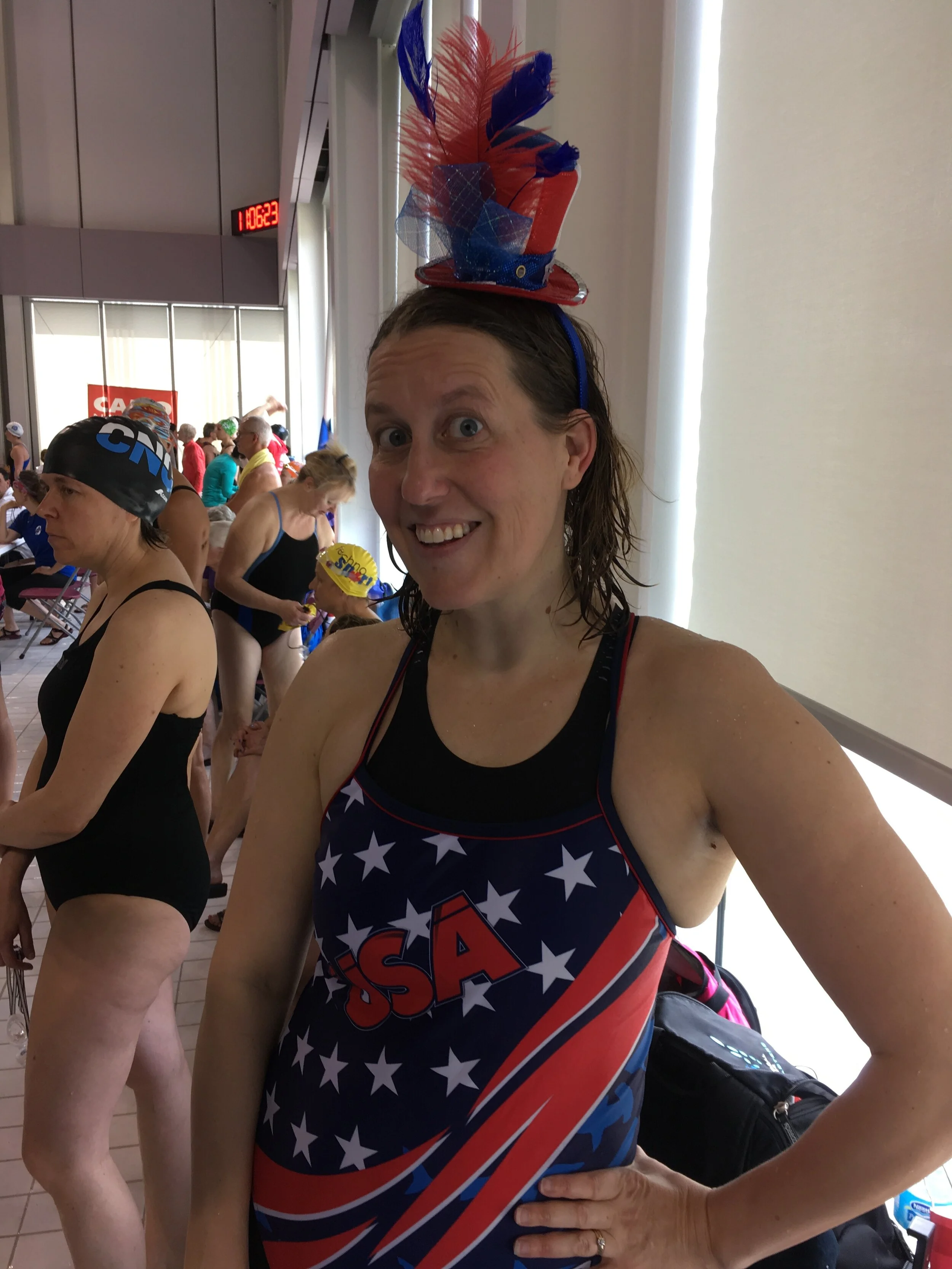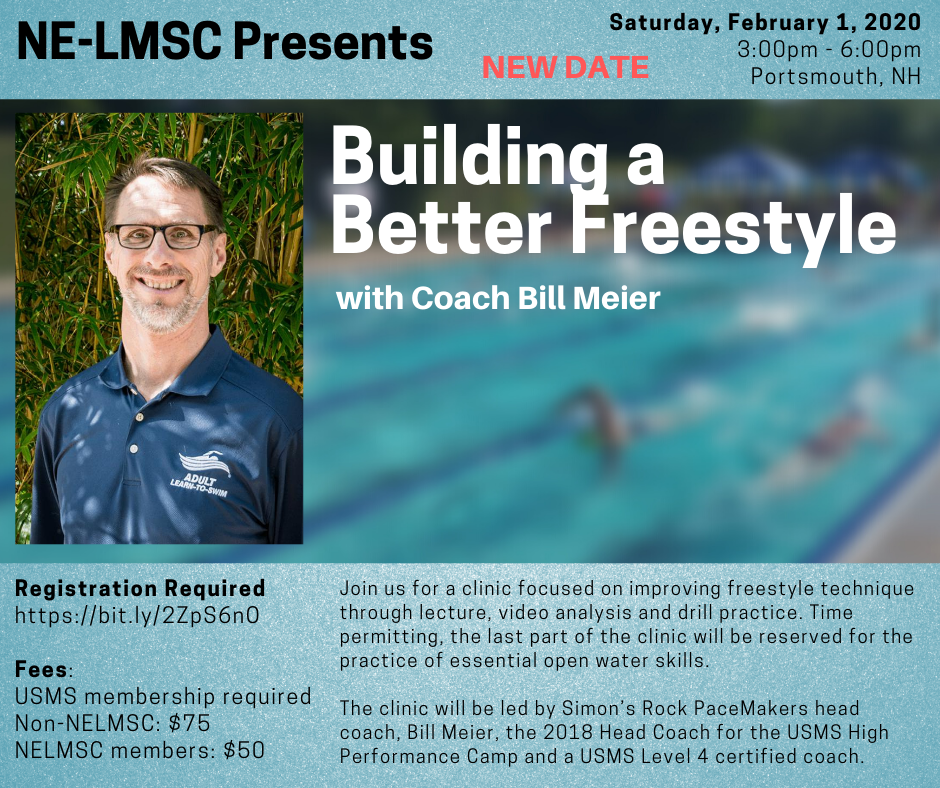Contributed by Bob Ouellette, NELMSC Coaches Chair
As I gazed the length of the lane, my eyes were immediately drawn to the dark sky visible through the pool windows. The clock had just turned to 5:00 am and, as usual, I procrastinated getting into the pool. Once in the water, I began stroking my way to the wall and a wave of nostalgia ran over me as I realized that—like most days—I was swimming in lane 3!!
As I began to reminisce about my time in the pool I suddenly realized that I’ve been a lane 3 swimmer in this YMCA pool for more than half a century! First as an age grouper and high school swimmer, then later as an adult triathlete and lap swimmer, I recall most often ending up in lane 3. Gone are the diving board and old square starting blocks since replaced by newer sleeker ones, however, it is still the same lane 3 that I’ve known for so long.
For a brief few years in the mid 80’s I was the top dog, proudly claiming my rightful place with the big boys in Lane 4. I clearly remember those days when the fledgling triathletes and lap swimmers envied my smooth, rhythmic stroke as I smugly swam back and forth and provided them with “nuggets” to help them in their quest for that elusive perfect stroke. Although I relished my new status, it only lasted a few years as the younger and faster swimmers returned to the pool after the inevitable post college hiatus.
As I swam, I reflected upon the games of tag, swim workouts and meets, lifeguard classes, and college break workouts. Especially etched in my mind are those glorious snow days (then and now) when I have the opportunity to swim longer and even mix in an after swim steam room session. I flashed back to the fond memories of my diaper-clad son shrieking with glee as he jumped into the pool, and our weekly two-hour Saturday afternoon family swim sessions.
As I continued my swim, images of my parents in their water aerobics class (which they still participate in well into their eighties) popped into my mind, as did the many lap swimmers of yesteryear who willingly offered advice to the 16-year-old “kid” watching over them each evening. Although many of these events have faded away, the sunrises, sunsets and smell of chlorine continue to spark those cherished memories of the 50 years gone by.
Sometimes my morning swims bring me back to those high school days when my interval splits were faster and my workouts longer. Sometimes when finishing my Saturday morning swims I linger for a few minutes to watch the young instructors teaching their swim lessons and remember those days when I was the student and was also blessed to have that wonderful job!
As I reminisce about my 50+ years of swimming in this very pool I can’t help but ponder what lies ahead: Will I be able to secure my “retirement gig,” going back to where my first job of lifeguarding and teaching swimming began? How long can I continue my morning Lane 3 reservation? Will I eventually become one of the water aerobics crowd?
Whatever the future holds I know that it’ll involve my beloved pool that has served me well for five decades and watched me grow from a curious and energetic child to a “mature” swimmer nearing retirement. In hindsight, I’ve been blessed to have this facility and to have met and swum with so many wonderful people over the years. This rectangular body of water has been my sanctuary, my refuge, and my happy place for most of my life and I hope to continue in my beloved lane 3 for many more years to come. One of my swim coaches once told us, “When you’re young you pay the pool and when you’re older the pool pays you.” I’d say that the pool has more than paid me back and I’m forever grateful for the opportunity it’s given me!
Bob Ouellette is an avid lane 3 swimmer, Level 3 USMS Coach, and the NELMSC Coaches Chair. He can be reached at necoaches@usms.org.

















